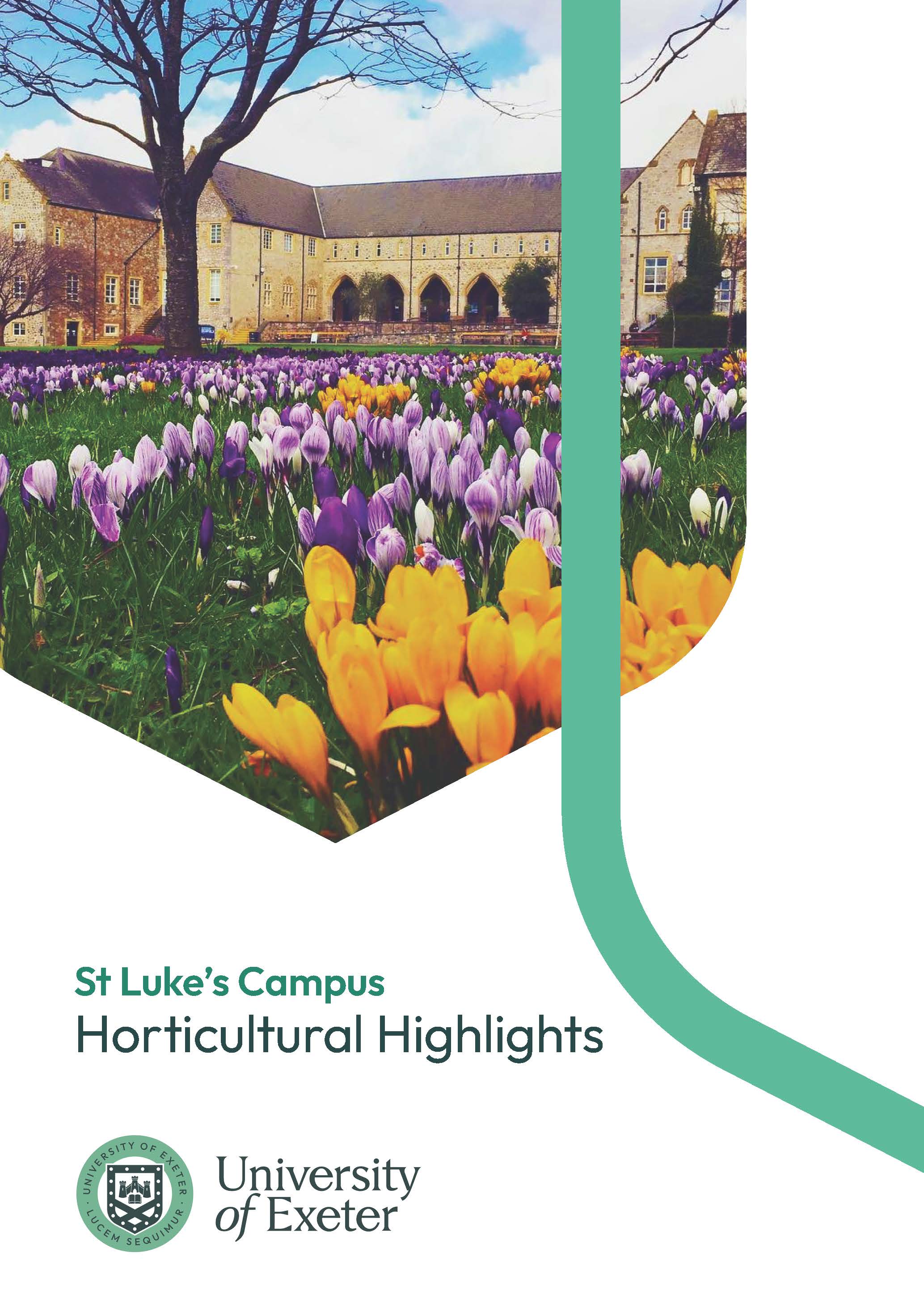.jpg)
There are several wildflower areas on campus which contribute positively to the environment, wildlife and our wellbeing. They provide essential habitats and rich sources of pollen and nectar for pollinators including bees, butterflies and other beneficial insects. Wildflowers conribute to the health and resilience of ecosystems by soil enrichment, water purification and nutrient cycling. Their natural beauty and colour enhance the aesthetics of the landscape and are an attractive and sustainable way to support both the environment and local wildlilfe.
St Luke's Campus
St Luke's Campus
St Luke’s Campus has a variety of formal landscapes with seasonal floral displays, herbaceous borders, shrubberies, areas for sport and recreation and specific features for wildlife.
The Quad forms the heart of the campus, and provides a tranquil and attractive place to relax, read a book, have lunch or just chat with friends. It can also be booked and used as an outdoor event space.
The landscaping and planting is designed to create a vibrant collegic atmosphere, with horticultural interest throughout the seasons providing students, staff and visitors with a diverse range of botanically significant plants and landscaping, including the National Collection of Azara; a small genus of mostly yellow flowered shrubs from South America.
The grounds at St Luke’s Campus are recognised as integral to the heritage and visual amenity and contribute to the biodiversity of both the city and the South West.
The quality open space is available for the local community to visit and use responsibly; we ask that everyone on campus respect the grounds.
St Luke's Volunteer Garden (SLUG)
The St Luke's Volunteer Garden (SLUG) was a new initiative set up in 2018 at the rear of the Medical School extension. All staff and students at St Luke's are welcome to join this group who are uplifting this area of campus to enhance and foster wellbeing, by providing a quiet space for staff and students to interact with green spaces and each other. Their aim is for the garden to be a shared and inspring space on St Luke's Campus.
SLUG has built three stone raised beds in which to grow vegetables; added benches and stone paths that lead to them; created a small pond and a tapestry lawn and have also started a composting initiative with the College of Medicine & Health which has been very successful.
Work has started on creating herb borders, planting fruit canes and bushes, adding another stone path, digging a frog/toad abode near the pond, and installing a fire pit. They are hoping to install two bee hives if they are able to recruit a sufficient Bee Team.
The group meets on Wednesday lunchtimes between 12pm and 2pm; if you would like more information please email them.
The grounds at St Luke’s are recognised as integral to the heritage, visual amenity and contribute to the biodiversity of both the city and the South West. The quality open space is available for the local community to visit and use responsibly. The landscaping and planting is designed to create a vibrant collegic atmosphere, with horticultural interest throughout the seasons, as well as summer sports facilities.
Highlights include:
- College House
- University of Exeter Medical School
- Richards Building
- Library
- Quad
- Rear of Sports Centre
- Baring Crescent Entrance
- Medical School Courtyard
- Mosiac Garden (rear of Baring Court)
- Staff Garden (Gated)
- North Cloisters Courtyard
- Heavitree Road Entrance
- Path from Heavitree Road Entrance
- to Magdalen Road Car Park (through the Quad)
St Luke’s Campus is fairly flat and all points are accessible.
The University of Exeter Streatham and St Luke’s campuses, fields and woodland areas contain over 10,000 mature trees managed by the Grounds staff.
This guide has been developed to enable some of our significant trees to be visited and enjoyed. It is not a comprehensive list, but provides a flavour of some of the elements that contribute to the look and feel of the estate resource.
It can start/finish at any point around the route, which takes in the following trees:
- Pinus nigra (Black Pine)
- Acacia dealbata (Silver Wattle)
- Liquidambar styraciflua (Sweet Gum)
- Catalpa bignonioides (Indian Bean Tree)
- Magnolia grandiflora (Southern Magnolia)
- Olea europaea (Olive)
- Fagus sylvatica ‘Riversii’ (Purple Beech)
- Juglans nigra (Black Walnut)
- Taxus baccata (English Yew)
- Platanus x hispanica (London Plane)
The Biodiversity Trail has been devised to help students, staff and visitors enjoy a route around the St Luke’s Campus that can help demonstrate the impact of some of the sustainable practices.
It can start/finish at any of the following points around the route.
- Insect Palace, Richards Building
- Naturalised Bulbs, Quad Tree Stands
- Wildflower Meadows
- Swift Boxes, Giraffe House
- Buddleia and Bird Boxes, Baring Court Car Park
- Bug Hotel, Front of Medical School






.jpg)






.jpg)



